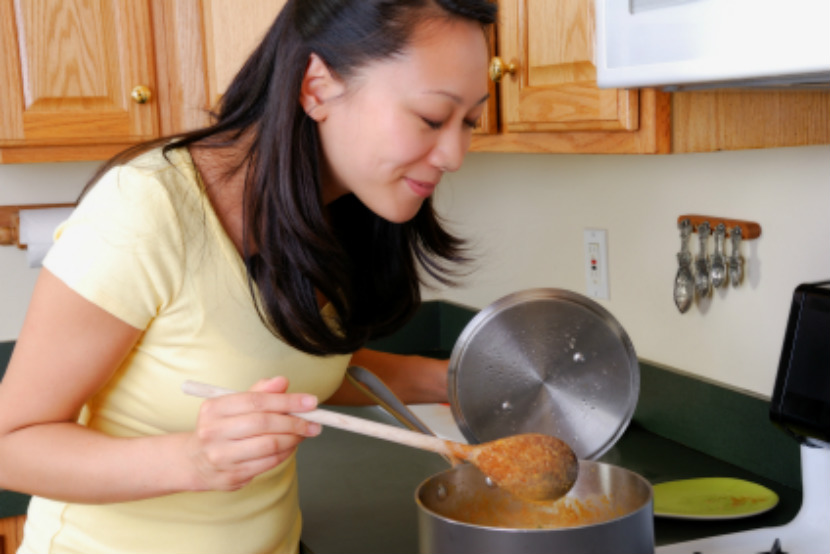
Looking for ways to seal in the flavour without adding a lot of fat? Cooking foods with ‘wet heat’ is an excellent way to prepare your favourite dishes. Read on to learn about cooking healthy using wet heat.
Cooking foods with wet heat is healthy
Cooking with ‘wet heat’ is a process where food is cooked by being placed into a hot liquid or exposed to steam. Wet cooking methods are excellent at softening tough fibers in foods. The moist heat improves tougher cuts of meats like a beef chuck, shank or brisket, highly fibrous vegetables like collard greens or pea pods and legumes like beans and lentils. Wet heat is also a low-fat cooking method because little or no added fat is needed. Meats, fish, white-meat poultry and vegetables cook well when prepared with wet heat.
There are many ways to cook with wet heat
Braising, boiling, steaming, poaching and simmering are the different ways to cook using wet heat:
Braising
Braising is great for cooking tough yet flavourful ingredients. Braising happens in two steps. First, you use dry heat to brown food. Second, add a small amount of liquid at low heat to make it more tender. The liquid slowly cooks the food, developing deep flavour while breaking down tough fibers. Cook foods until they are “fork-tender” meaning you can pierce them with a fork. Braising is an excellent technique for less expensive cuts of meats or vegetables. Try this method with Moroccan Lamb Tagine.
Boiling
People often think of boiled foods as overcooked and having little nutrition. However, boiling can be desirable in some cases and is a faster way of cooking foods compared with dry heat. When boiling foods, it’s important to cook them at a full boil. This means you should see lots of big bubbles forming quickly in the liquid. Try boiling for recipes with legumes like in curried lentils, with sweet potato and cauliflower.
Steaming
Steaming uses moisture from a small amount of boiling or simmering water to cook food. To steam foods, do not place them directly in water. Instead, put food on a rack or a steamer basket and place this over the liquid. Put a lid on the pot to help trap in the moisture. Steaming is a better choice than boiling or poaching when you are trying to keep the food’s flavour, shape and texture. Cooked foods also lose fewer nutrients when they are steamed. Steaming does not require any added fat, so it’s a low-fat and easy way to prepare any kind of vegetable, like broccoli, carrots or green beans. Steam your favourite vegetables and then add freshly squeezed lemon juice to bring out the flavour.
Poaching
Poaching cooks food gently in liquid at a temperature below the boiling point. To poach foods, add water or broth and heat until the liquid starts to steam but before it starts to boil. Try poaching delicate foods like seafood in this tea poached salmon made with fruit salsa or white-meat poultry (chicken or turkey breast). This is an excellent technique to make sure foods do not overcook before the inside is done. Like with any meat or fish dish, use a food thermometer to check that your food is done to the right temperature.
Simmering
Simmering uses a low temperature to gently cook foods. Bring the liquid to a low temperature until tiny bubbles just begin to form at the surface of the liquid. Keep a close eye to make sure the temperature remains at a low heat to prevent larger bubbles from forming, as this will result in boiling. This is a good cooking method for tough meats, because it tenderizes the meat while creating a flavourful broth. Simmering is also a great way to tenderize meats for stews and chowders, like this chicken and corn chowder.
More tips for cooking with wet heat
-
Keep temperatures low. Braising, steaming, poaching and simmering need liquids to be kept at a low temperature so that the slow and even cooking brings out the most flavour and tenderness.
-
Keep the moisture in. You need a tight fitting lid for your pot to keep the moisture in. This moist heat is what cooks the foods.
-
Experiment with different liquids. Poaching with juice, stock or broth is a great way to add flavour to food.
-
Choose the right ingredients. You do not need to buy expensive cuts of meats when braising. Because this cooking method softens foods, cheaper cuts of meats are best, making it an inexpensive way to include meat in your menus.
You may also be interested in:
Food Dictionary: Cooking with Dry Heat Methods
How to cook with Spices
How to Cook with Herbs
Last Update – June 13, 2018